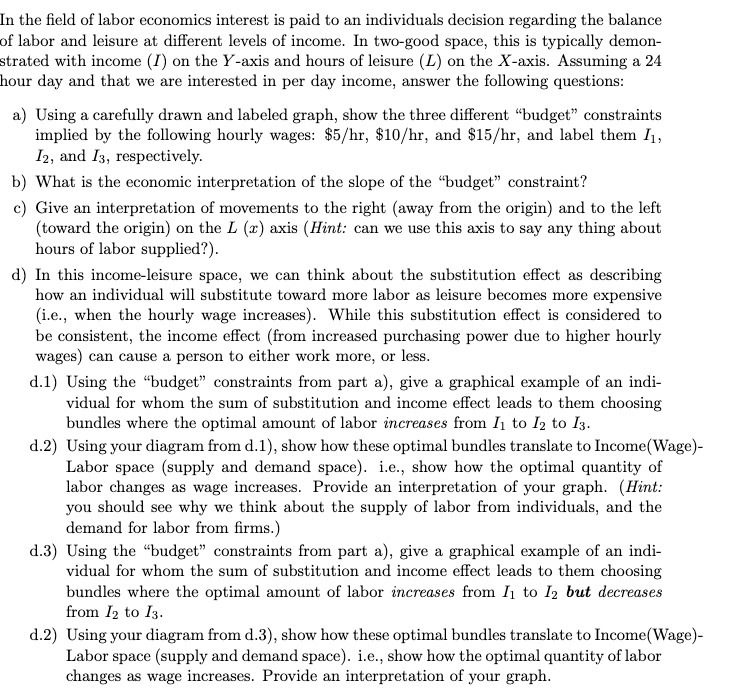
In the eld of labor economics interest is paid to an individuals decision regarding the balance of labor and leisure at different levels of income. In twogood space, this is typically demon strated with income {I} on the Yaxis and hours of leisure {L} on the Xaxis. Assuming a 24 hour day and that we are interested in per day income, answer the following questions: a} Using a carefuy drawn and labeled graph, show the three different \"budget\" constraints implied by the following hourly wages: $5,!hr, $11'f, and $15fhr, and label them I1, I2, and I3, respectively. b} What is the economic interpretation of the slope of the \"budget\" constraint? c} Give an interpretation of movements to the right [away from the origin} and to the left [toward the origin} on the L {1:} axis (Hint: can we use this axis to say any thing about hours of labor supplied?}. d} In this inoomeleisure space, we can think about the substitution effect as describing how an individual will substitute toward more labor as leisure becomes more expensive [i.e., when the hourly wage increases}. While this substitution effect is considered to be oonsistent, the income effect {from increased purchasing power due to higher hourly wages) can cause a person to either work more, or less. d.1} Using the \"budget\" constraints from part a}, give a graphical example of an indi vidual for whom the sum of substitution and income effect leads to them choosing bundles where the optimal amount of labor increases from I1 to lg to I3. d2} Using your diagram from d. 1}, show how these optimal bundles translate to Income{Wage} Labor space {supply and demand space}. i.e., show how the optimal quantity of labor changes as wage increases. Provide an interpretation of your graph. (Hint: you should see why we think about the supply of labor from individuals, and the demand for labor from rms.) d.3} Using the \"budget\" constraints from part a}, give a graphical example of an indi vidual for whom the sum of substitution and income effect leads to them choosing bundles where the optimal amount of labor increases from I1 to I2 but decreases from I2 to 1'3. d.2} Using your diagram from d3}, show how these optimal bundles translate to Income{Wage} Labor space {supply and demand space}. i.e., show how the optimal quantity of labor changes as wage increases. Provide an interpretation of your graph








